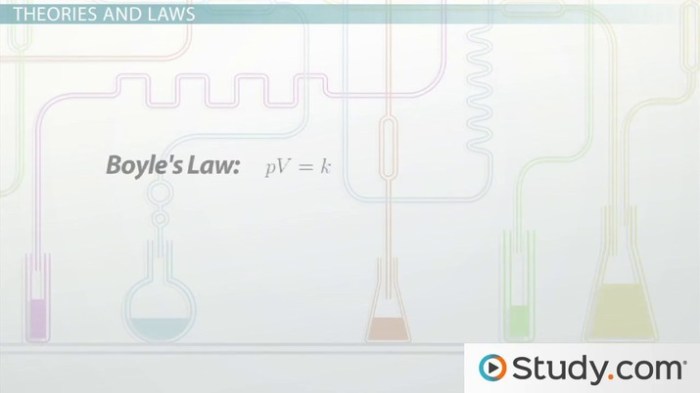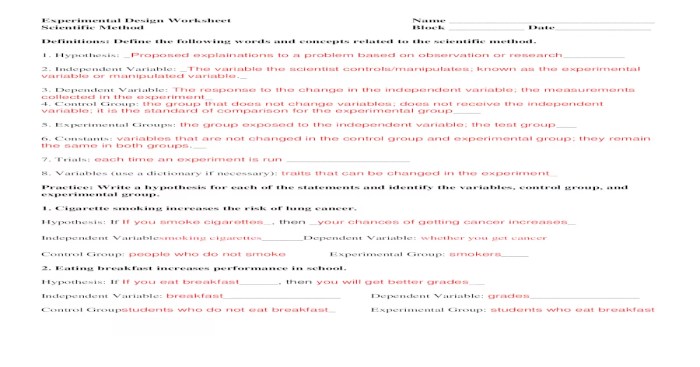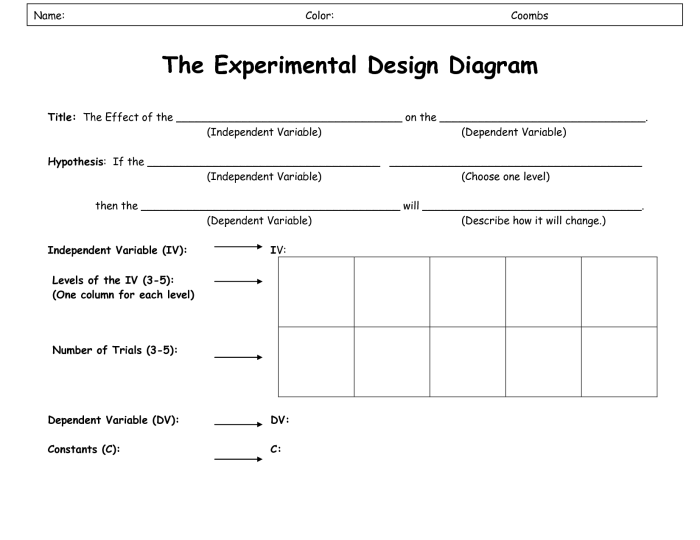Experimental design worksheet scientific method answers: Embark on a journey of scientific discovery, where hypotheses are tested, variables are controlled, and data is analyzed to unravel the mysteries of the world around us. This comprehensive guide will equip you with the knowledge and tools to design and conduct scientific experiments with precision and confidence.
Delve into the scientific method, the cornerstone of scientific inquiry, and learn how to formulate hypotheses, identify variables, design procedures, collect and analyze data, and draw conclusions based on experimental results. This guide will empower you to approach scientific investigations with a systematic and rigorous mindset, enabling you to solve problems, answer questions, and contribute to the advancement of human knowledge.
Experimental Design Worksheet

An experimental design worksheet is a tool that helps researchers plan and conduct experiments. It Artikels the hypothesis, variables, and procedures involved in the experiment, ensuring that the research is conducted systematically and efficiently.
The key components of an experimental design worksheet include:
- Hypothesis:A testable statement about the relationship between variables.
- Variables:Factors that can change in an experiment.
- Procedures:The steps involved in conducting the experiment.
By using an experimental design worksheet, researchers can ensure that their experiments are well-planned and executed, increasing the likelihood of obtaining valid and reliable results.
Scientific Method Answers
The scientific method is a systematic approach to solving problems and answering questions. It involves making observations, forming hypotheses, testing hypotheses, and drawing conclusions.
The steps of the scientific method are:
- Make observations.
- Form a hypothesis.
- Test the hypothesis.
- Draw conclusions.
The scientific method is important because it provides a structured way to investigate problems and answer questions. By following the steps of the scientific method, researchers can ensure that their investigations are objective and unbiased.
Hypothesis Development

A hypothesis is a testable statement about the relationship between variables. It is important to develop a hypothesis before conducting an experiment because it provides a focus for the research and helps to ensure that the experiment is designed to test a specific question.
The characteristics of a good hypothesis are:
- It is testable.
- It is specific.
- It is falsifiable.
To develop a hypothesis, researchers should start by making observations and gathering information about the topic they are interested in. They can then use this information to form a hypothesis that predicts the relationship between variables.
Variable Identification: Experimental Design Worksheet Scientific Method Answers
Variables are factors that can change in an experiment. There are two main types of variables: independent variables and dependent variables.
Independent variablesare the variables that the researcher manipulates or changes. Dependent variablesare the variables that are measured or observed in response to the changes in the independent variable.
It is important to control variables in an experiment to ensure that the results are valid. This means that the researcher must make sure that all of the variables except for the independent variable are kept constant.
Procedure Design
A procedure is a detailed description of the steps involved in conducting an experiment. It is important to develop a procedure before conducting an experiment because it helps to ensure that the experiment is conducted in a consistent and reproducible manner.
The steps involved in designing a procedure are:
- Identify the materials that will be needed.
- Describe the steps of the experiment in detail.
- Include safety precautions.
By following these steps, researchers can ensure that their procedures are clear and concise, and that the experiment can be replicated by other researchers.
Data Collection and Analysis

Data collection is the process of gathering information during an experiment. Data analysis is the process of interpreting the data to draw conclusions.
There are different methods of data collection, including:
- Observation
- Surveys
- Interviews
- Experiments
There are also different methods of data analysis, including:
- Descriptive statistics
- Inferential statistics
- Regression analysis
By using appropriate data collection and analysis methods, researchers can ensure that they collect and interpret data accurately and objectively.
Conclusion and Discussion
The conclusion of an experiment is a summary of the results and a statement of the conclusions that can be drawn from the results.
The discussion section of an experiment provides an interpretation of the results and discusses the implications of the findings.
It is important to draw conclusions based on experimental results and to discuss the implications of the findings because this helps to communicate the significance of the research and to identify areas for future research.
FAQ
What is the purpose of an experimental design worksheet?
An experimental design worksheet is a tool that helps researchers plan and conduct experiments by providing a structured framework to define the hypothesis, identify variables, design procedures, and collect and analyze data.
What are the key components of an experimental design worksheet?
The key components of an experimental design worksheet include the hypothesis, independent and dependent variables, controlled variables, procedures, data collection methods, and data analysis methods.
How can I use an experimental design worksheet to conduct an experiment?
To use an experimental design worksheet to conduct an experiment, follow these steps: define the hypothesis, identify the variables, design the procedure, collect the data, analyze the data, and draw conclusions based on the results.